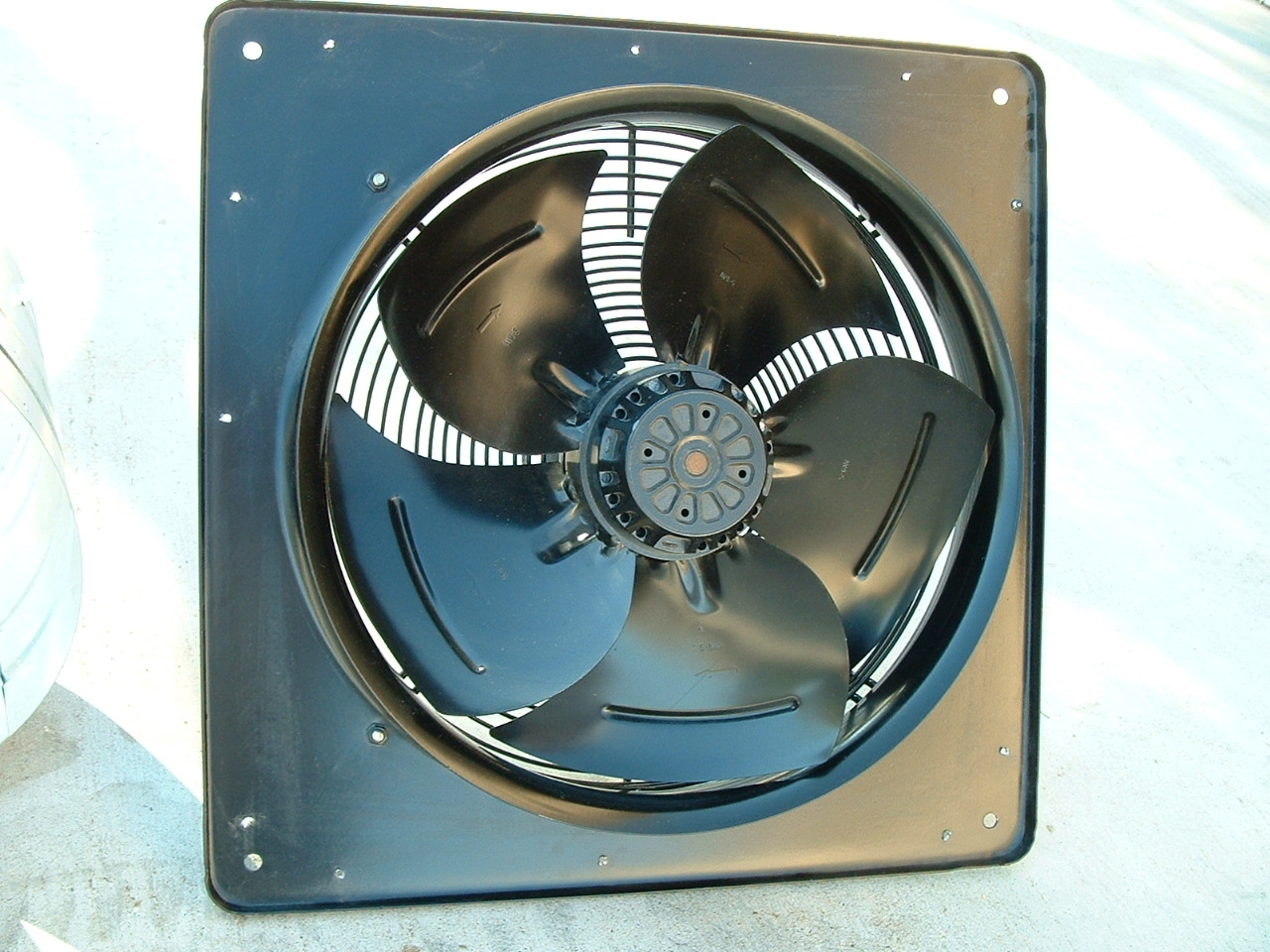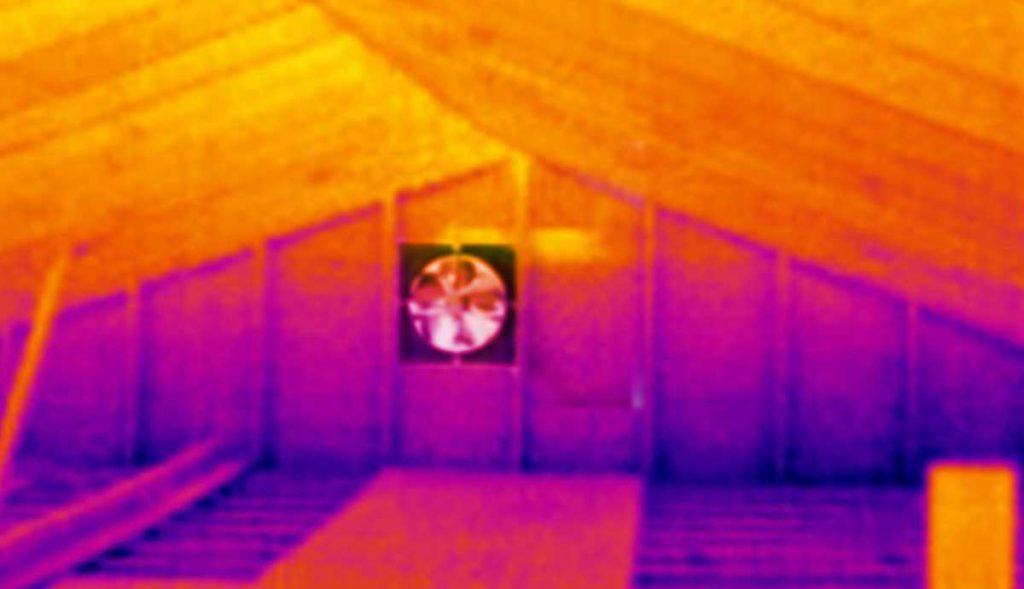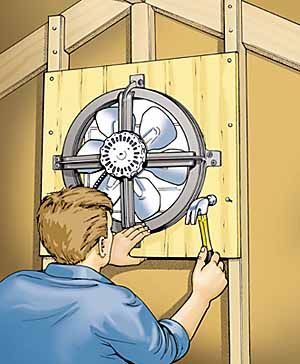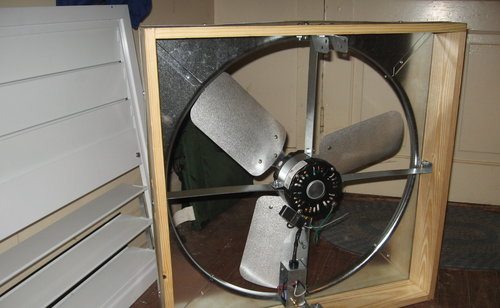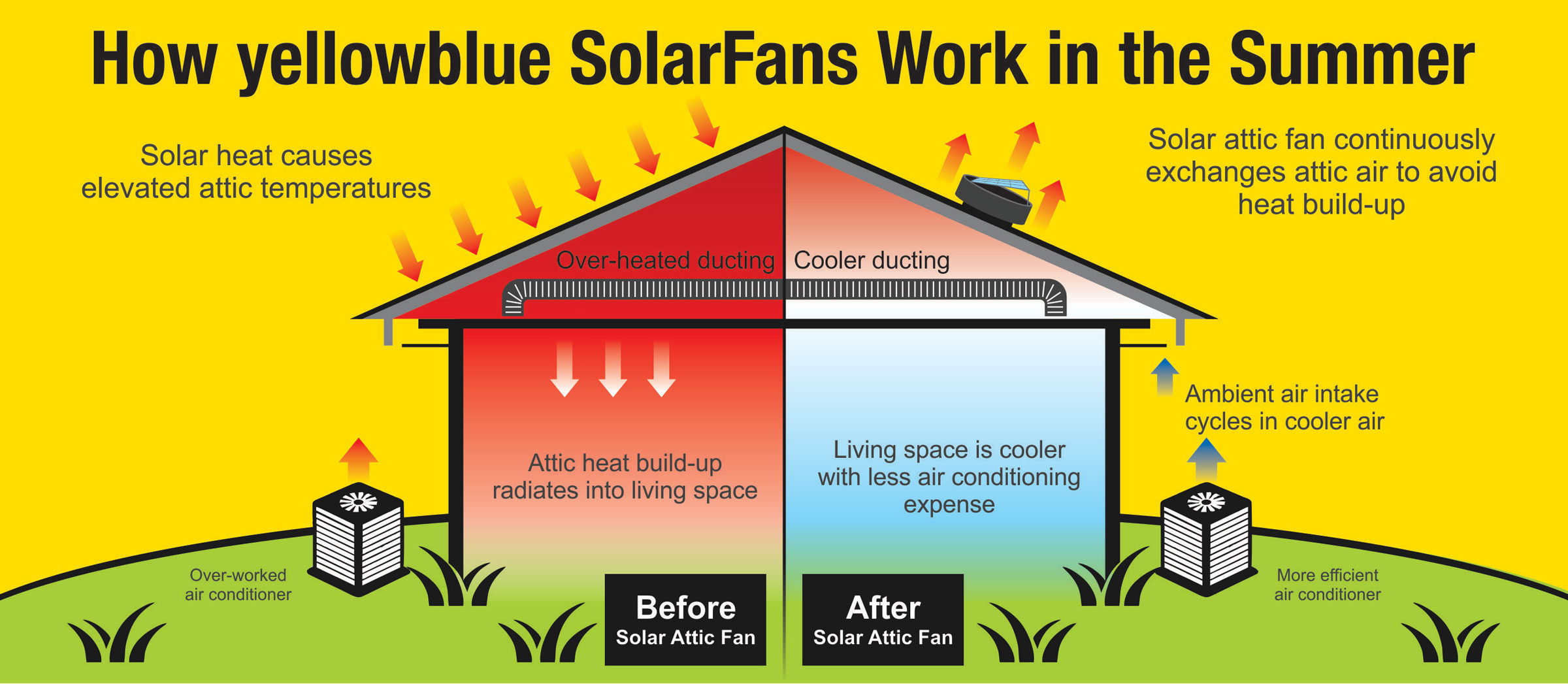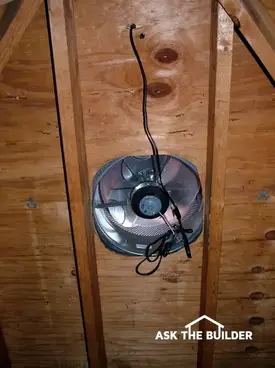In all cases the ducting needs to conduct the exhaust to the building exterior and needs to terminate in an animal proof vent cover.
Attic fan blowing down water heater exhuast.
This will stop the pilot light problem but now you have to allow some make up air to enter your home to supply the suction to the attic fan.
Low cfm similar to a bathroom vent 300cfm and only in the hot spots basically by adding an inline ducting fan to the return ducts for the hotspot rooms.
It is sucking air down from the chimney which runs to the top of your water heater and down to the pilot light.
The most common problem associated with water heater venting is a condition called backdrafting in which exhaust gases from the water heater fail to exit the home via the vent and instead end up in the house.
If there are not enough soffit gable or ridge vents a powerful attic exhaust fan can pull the air from your home through the ceiling if it is not perfectly sealed off.
My idea is to vent the build up of hot air that has risen to the ceiling in the hotspot rooms into the attic so that air from cooler parts of the house can move in.
Somehow when the attic fan sucks air up into the attic it is making its way back down through the flu ducting of the water heater and furnace even blowing out the pilot light on the water heater.
When venting a bathroom exhaust fan make sure to vent the air to the outside rather than into your attic where it can cause mold and mildew to form.
Strong attic fans can actually back draft furnaces or water heaters by pulling combustion gases out of their burnersand into the home.
Trying to solve the heat gain problem in your attic by using a fan is like lying out at the beach with a fan blowing over you and thinking you re not going to get a sunburn.
This article describes routing bath exhaust fan duct upwards through an attic or roof space or downwards through a floor or crawl space.
First put some weatherstrip on the basement door and maybe a threshold at the bottom.
Using a fan to blow hot air out of the attic doesn t address the radiant heat flow from the roof to the attic floor.
Much of that heat then conducts downward and finds its way into the house.
Which direction is better.
This fan ends up pushing the exhaust gases up the vent and if the water heater vent connector is located directly across from where the exhaust gases are directed the exhaust gases from.





